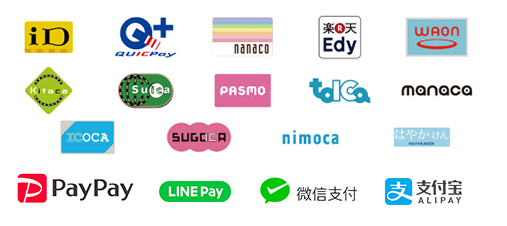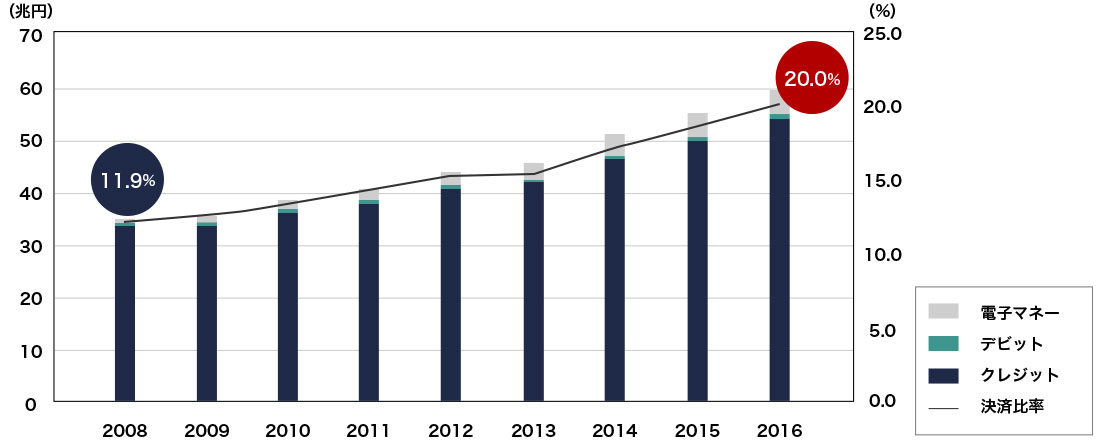- HOME
- Cashless
- English
- 日本語
 is
ishelping cashless at stores
With smartphones and mobile terminals · Credit cards · electronic money etc. have greatly made a leap by restoration of PC · Purchase of goods · Suica and other public transportation fees can be paid. Along with that, so-called cashless stores with no cash have increased as long as there is only one card or smartphone.


| キャッシュレス比率(※) | 同期間におけるキャッシュレス化の進展の施策例 | |||
| 2007 | 2016 | 07年 → 16年 | ||
| 韓国 | 61.8% | 94.6% | +34.6% |
|
| イギリス | 37.9% | 68.7% | +30.8% |
|
| オーストラリア | 49.2% | 59.1% | +9.9% |
|
| シンガポール | 43.5% | 58.8% | +15.3% |
|
| カナダ | 49.0% | 56.4% | +7.4% |
|
| スウェーデン | 41.9% | 51.5% | +9.6% |
|
| アメリカ | 33.7% | 46.0% | +12.3% |
|
| フランス | 29.1% | 40.0% | +10.9% |
|
| インド | 18.3% | 35.1% | +16.8% |
|
| 日本 | 13.6% | 19.8% | +6.2% |
|
| ドイツ | 10.4% | 15.6% | +5.2% |
|
| 中国(※※) | (参考) 約40%(2010年)⇒約60%(2015年) |
|
||
01
If it is not cashless, you will not be forged. It is only banks that receive money, so you do not have to worry about counterfeit bills.
02
By not having cash, it can be expected to lead to crime prevention such as robbery and snatching.
03
By making it easier to manage day-to-day operations such as sales and payment, cost reductions and sales efficiency improve, so it is said that excessive labor can be suppressed and productivity can be raised.
Do not you see what you see in shops in Japan is "credit settlement impossible". In developed countries in Europe there are many countries with signs that "cash is not accepted" on the contrary.
Only cards are on sale machines such as railroads and buses. Taxi is also card settlement only. In addition, public toilets in the station's home etc. are also commonly charged in Europe, but there are also cashless payment there, and it is only payment

Graph Cited by: Ministry of Economy, Trade and Industry material "Cashless Current Status and Promotion
The cashless ratio in Japan is about 20% if it is the latest data. Compared to 60% in China and 46% in the US, Japan's cashless implementation is behind schedule. The Japanese government has set a policy of doubling the cashless ratio by 40% by 2020, but cash settlement is common in Japan, so even if it is going to advance credit card settlement and mobile payment, consumers and Business operators are not aggressive either. However, Japan has fallen into a chronic shortage of manpower, and as a society, we must promote cashlessness and increase productivity. Also, increasing the cashless ratio as a basis for creating new services is absolutely essential to enhance the quality of life in the Japanese economy and citizens in the future.